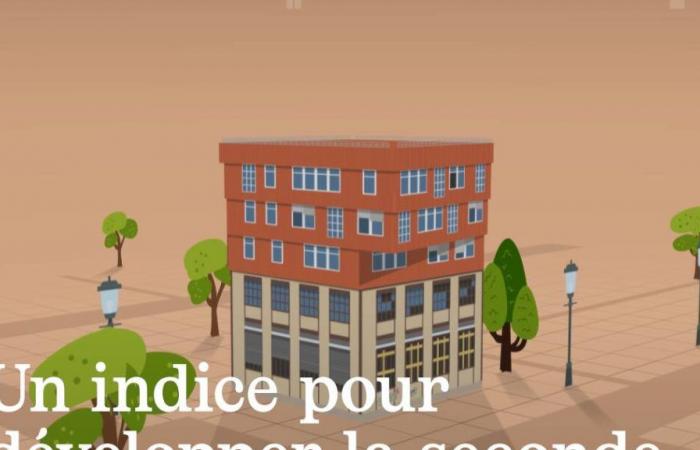Published on October 14, 2024 at 11:38. / Modified on October 14, 2024 at 11:40.
When we talk about reusing materials, the K. 118 hall in Winterthur stands out as a model building. Indeed, the three-story extension of this hall was largely carried out using second-hand elements. For example, the steel structure, window frames and facade cladding come from old deconstructed buildings.
The practice is developing in Switzerland, in the logic of the circular economy, to face two major challenges in the sector: its environmental footprint and the management of its waste. Cement production alone generates around 9% of CO2 emissions globally. Because new buildings have to be built, others destroyed and some adapted, buildings also generate a significant amount of waste. In Switzerland, 17 million tonnes of materials are thrown away each year. Around 40% of this construction waste is concrete.
Corentin Fivet, professor at EPFL and director of the Smart Living Lab in Friborg, is one of the thinkers of reuse in Switzerland. If the practices of reusing resources from one structure to another tend to become more widespread, the sector still lacks good reflexes: “We do not yet have good procedures for evaluating or anticipating the cost of future deconstruction. » A central question must punctuate the decisions: “What is worth reusing in this building?”
This question of the potential for reusability of materials is being studied in the offices of the Faculty of Natural, Architectural and Built Environment (ENAC) at EPFL. Doctoral student Maria Sivers is working to set up an index for engineers and architects, but also the general public, to estimate the potential of materials before deconstruction, according to several criteria: the economic aspect, the environmental gain, the level degradation of the material as well as market demand. Its name: Reuse Viability Index. “If we have a reinforced concrete component dating from 1985, we can predict its reuse potential based on market demand for this type of new, reusable component,” she illustrates.
Enough to imagine a 100% second-hand building sector? Impossible as it stands, according to Corentin Fivet. “We cannot replace all current concrete production with reused concrete. Today in Switzerland, we produce seven times more concrete per year than we demolish each year,” says the director of the Smart Living Lab. However, Corentin Fivet estimates that 90% of the carbon footprint of concrete could be reduced thanks to its reused alternative. Second hand construction also has other challenges. Among them, the lack of standardization, the design of materials designed for single use, as well as questions of costs and competitiveness with new materials. Without mentioning that traditionally, it is mainly outright demolition that is favored.
Other initiatives still add grist to the mill. Let us cite for example the Rebuilt student project at EPFL, which participates in research on the reuse of materials, or the European FCRBE project, which aims to increase the use of reused elements by 50% in Europe. by 2032.






